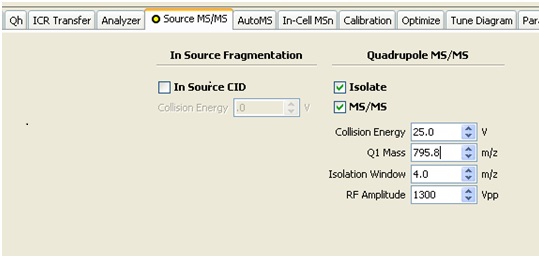This is enabled by adjusting the collision cell pole bias voltage during trapping in the collision cell. The resulting difference between ion funnel 2 and the collision cell pole bias voltages, the collision energy, will cause the ions to undergo energetic collisions with the gas as they are accelerated into the cell. If enough collisions occur and if they are energetic enough, then it is possible that the ion will gain enough energy to dissociate and form products. The product ions are then cooled and trapped by further collisions with the gas. Again, after trapping the pole bias voltage is pulsed to the extraction value so that the ions can be efficiently transferred into the Analyzer cell.

MS/MS Tuning tab